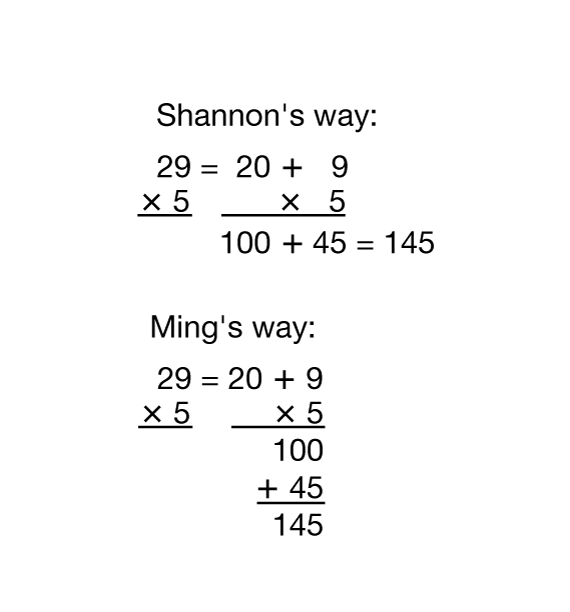Break-Apart Products with Larger Numbers
Est. Class Sessions: 2–3Developing the Lesson
Part 3. Solve Problems Using Expanded Form
In Questions 6–7 in the Student Guide, students solve problems using the expanded form of two-digit numbers to show how to break them into tens and ones, instead of drawing rectangles. For example, to multiply 5 × 29, they write 29 in its expanded form, 20 + 9. They find the same products as with the rectangle method, 5 × 20 = 100 and 5 × 9 = 45, but they record them differently. In this lesson, we show two ways to record their work, Shannon's way and Ming's way. See Figure 2. Encourage students to record their calculations in a way that is meaningful to them. In a later unit, we will introduce formal algorithms for recording their solutions.
After students complete Question 6, ask:












